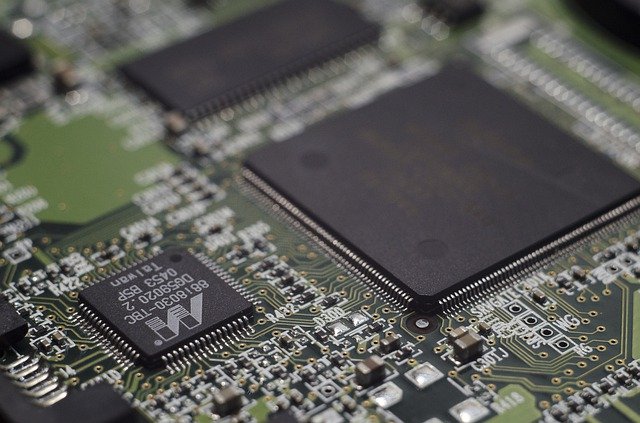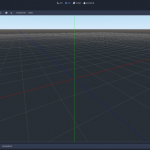If you’re not an expert in computer hardware, it can be hard to understand the difference between a chipset and a CPU.
A lot of people think that they are one and the same thing, but this isn’t true. The chipset is just the motherboard on which all of your components may be installed and connected. It’s what enables your CPU to communicate with other components like RAM or graphics cards.
In this blog post, we will explore the difference between a chipset and a CPU.
Table of Contents
CPU vs Chipset
| Chipset | CPU | |
|---|---|---|
| Definition | A chipset is a set of electronic components on a motherboard that manages data flow between the CPU, memory, and other peripherals. | A CPU is the primary component of a computer that performs most of the processing inside the system. |
| Function | It provides the necessary interfaces and connectivity for various components, including the CPU, memory, storage devices, expansion slots, and peripherals. | It executes instructions, performs calculations, and manages data processing tasks within the computer system. |
| Role | It acts as a bridge between the CPU and other components, facilitating communication and data transfer. | It is responsible for carrying out all the instructions and operations necessary for running software and performing tasks. |
| Components | It consists of several integrated circuits, such as the northbridge, southbridge, memory controller, PCI-E controller, USB controller, etc. | It typically comprises an arithmetic logic unit (ALU), control unit, registers, cache, and instruction decoder, among other components. |
| Upgradability | Upgrading the chipset usually involves replacing the entire motherboard. | CPUs can often be upgraded by removing the existing CPU and installing a new one compatible with the motherboard’s socket type. |
| Impact on Performance | The chipset’s design and capabilities can affect system performance, especially in terms of data transfer speeds and peripheral support. | The CPU’s performance directly influences the speed and efficiency of computations and overall system responsiveness. |
| Manufacturers | Chipsets are manufactured by companies like Intel, AMD, NVIDIA, etc., specifically for compatibility with their respective CPU architectures. | CPUs are manufactured by companies like Intel, AMD, ARM, IBM, etc., and are available in various models and generations. |
| Importance | The chipset is important for system stability, peripheral compatibility, and expansion capabilities. | The CPU is crucial for determining the overall computing power and performance of a system. |

The chipset is the motherboard of a phone and computer or, in other words, the motherboard on which all of the components may be installed and connected. The chipset enables the CPU to communicate with other components of the computer.
A CPU consists of one central processing unit (CPU) chip which contains all of the computing power for executing instructions from an operating system as well as running any programs that have been loaded into memory by those instructions.
We will explore how they differ in greater detail below:
What is a Chipset?
A chipset is a set of computer chips that are designed to work together closely in order to allow communication with other chipsets or devices.
The term “chipset” may be traced back to the original IBM PC design which described an expansion board that took the place of several integrated circuits (ICs) and other components. This board was responsible for controlling all input/output functions as well as handling data communications between the CPU and memory and among peripheral devices such as disk drives, monitors, keyboards, printers, etc.
Today’s motherboards contain multiple chipsets for coordinating low-level activities among the various motherboard components including both hardware and software interactions with CPUs, RAM, hard disk drives, etc. For instance, some chipsets are designed to handle data transfer between the CPU and RAM while others are responsible for controlling peripheral devices.
What is a CPU?
When it comes to CPUs, modern processors contain two or more execution units that perform arithmetic/logical operations at high speed. These execution units are known as “cores”.
For example, the Intel i7-920 contains four cores while the Intel Xeon E5-2690 has 10. The most common types of cores in use today include single-, dual-, triple- and quad-. So when we talk about a computer having a 2 GHz 8 core processor (CPU), this essentially means that every second, the CPU can complete eight billion arithmetic/logical operations which is equivalent to 2GHz x 8 cores = 16,000 MIPS or 16 Giga-FLOPS.
When a CPU is executing instructions from an operating system, it will often have to wait for software and other devices to generate data that the execution unit(s) can use in their computations.
In other words, when a program is running on a computer that contains a 2 GHz 8-core processor (CPU), each of the cores will only be able to operate at a maximum speed of 2GHz x 1 core = 2GHz until data is ready for them to process, at which point they would then be able to run at full speed again.
Now this brings us back to the chipset because since CPUs rely on them heavily during processing periods, if there was no chipset present or if one of the chipsets was faulty, then this would cause a bottleneck because it would limit the performance of all cores.
In other words, if the CPU has one 2 GHz 8 core processor (CPU) and there were two chipsets present but one of them was faulty, then during processing periods when data is required by all eight cores simultaneously, only four cores would be able to operate at their maximum speed while the other four cores would have to wait until data from another chipset becomes ready for use in computations.
